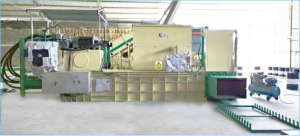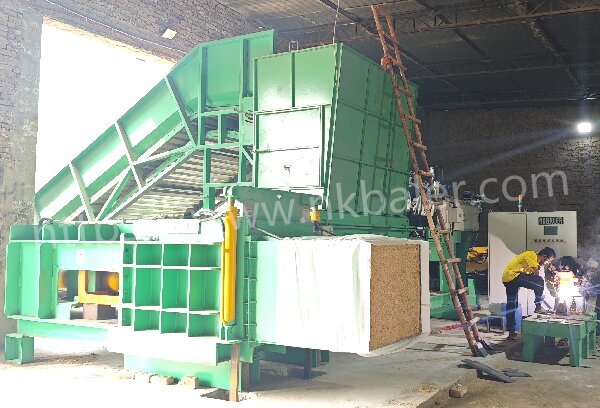Silage Baling Press roars across the fields, swallowing fluffy straw and spitting out neat, solid bales. This seemingly simple process embodies a series of sophisticated mechanical principles.Understanding its workings not only satisfies curiosity but also helps us master its use and maintenance. So, how does this amazing machine work? The entire process can be clearly divided into several stages. The first stage is “collection.” Rotating collector at the front of the machine, equipped with densely packed elastic tines, acts like a flexible comb, smoothly and cleanly picking up the Silage strands from the ground and feeding them into a pre-compression chamber via a conveyor belt or a paddle mechanism. The second stage is “feeding and pre-compression.”
The Silage is continuously fed into a chamber called the “stuffer,” where a series of reciprocating pistons or screws provide initial compaction and neatly pack the hay into the main compression chamber. This step ensures a uniform and continuous flow of Silage into the main compression chamber, which is the foundation for forming neat, uniform bales. The third stage is the core “primary compression.” In a square baler, a powerful reciprocating piston pushes the Silage forward with tremendous pressure within a rectangular compression chamber, compressing it to extreme levels. Once the preset length is reached, the knotter system activates, securing the bale with twine or plastic rope. The piston then pushes the formed bale out, completing the cycle.
In round balers, the principle is slightly different. It typically uses two V-shaped belts, a set of rollers, or a steel drum system to roll the Silage within a continuously rotating chamber. Centrifugal force and mechanical pressure gradually compact the Silage, forming a cylindrical bale. When the set density is reached, a net or rope wrapping mechanism activates, enveloping the bale. The door then opens, and the bale rolls out. Understanding this process reveals that the secret of a successful baler lies in the precise and reliable coordination of its various components: the pickup, filler, compression piston or forming belt, and knotter.

Nick Baler’s Silage Baling Press offer a high-efficiency solution for compressing, bagging, and sealing lightweight, loose materials, including agricultural waste, sawdust, wood shavings, textiles, fibers, wipers, and biomass waste. By converting loose materials into compact, easy-to-handle bags, these machines ensure efficient storage, improved cleanliness, and minimized material loss. Whether you’re in the livestock bedding industry, textile recycling, agricultural processing, or biomass fuel production, Nick Baler’s advanced bagging balers help streamline operations by reducing waste volume and improving material handling. With over 20 years of experience, we deliver customized solutions that enhance efficiency, durability, and automation in material packaging.

Why Choose Nick Baler’s Silage Baling Press?
Perfect for Baling Lightweight, Loose Materials – Effectively compress and bag sawdust, straw, textile waste, and more.
Improves Storage Efficiency & Cleanliness – Reduces material bulk and ensures dust-free handling.
Prevents Contamination & Spoilage – Sealed bales keep materials clean, dry, and protected from environmental damage.
Reliable for Various Industries – Essential for textile recycling, sawdust processing, agricultural residue management, and industrial waste handling.
Customizable Bale Sizes & Compression Settings – Tailor the machine to specific material densities and packaging requirements.
https://www.nkbaler.com
Email:Sales@nkbaler.com
WhatsApp:+86 15021631102
Post time: Oct-21-2025